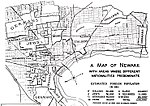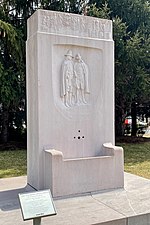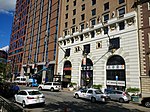Seton Hall University School of Law
1951 establishments in New JerseyCatholic law schools in the United StatesCatholic universities and colleges in New JerseyEducation in Newark, New JerseyEducational institutions established in 1951 ... and 6 more
Law schools in New JerseyLaw schools in the New York metropolitan areaSeton Hall University School of LawUniversities and colleges in Essex County, New JerseyUniversities and colleges in Newark, New JerseyUse mdy dates from June 2023
Seton Hall University School of Law is the law school of Seton Hall University, and is located in downtown Newark, New Jersey. Seton Hall Law is the only private law school in New Jersey. The school confers three law degrees: Juris Doctor, Master of Laws, and Master of General Legal Studies. Founded in 1951, it is accredited by the American Bar Association (ABA), and is also a member of the Association of American Law Schools (AALS).
Excerpt from the Wikipedia article Seton Hall University School of Law (License: CC BY-SA 3.0, Authors).Seton Hall University School of Law
Raymond Boulevard, Newark
Geographical coordinates (GPS) Address External links Nearby Places Show on map
Geographical coordinates (GPS)
| Latitude | Longitude |
|---|---|
| N 40.73652 ° | E -74.16641 ° |
Address
Seton Hall University School of Law
Raymond Boulevard
07101 Newark
New Jersey, United States
Open on Google Maps










